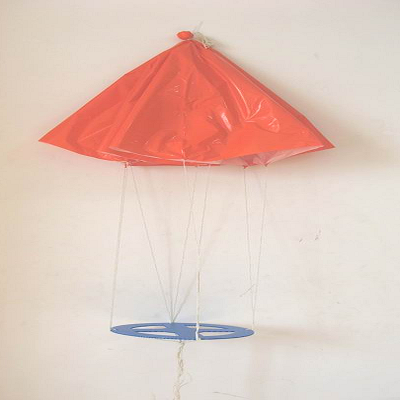PITTSBURGH (KDKA) - The weather down here on Earth's surface can be dependent on what is going on way up high in our atmosphere. We take measurements miles up with the assistance of balloons.
Weather balloons are a little different from balloons you find at the party store, so to learn more about these weather balloons, let's chat with Fred McMullen, a meteorologist at the National Weather Service's Pittsburgh office. Weather Balloon Payload

Elizabeth: Hey Fred Tell us what a weather balloon is.
Fred: It's an instrument that allows us to see what the actual temperature is of the atmosphere the whole way through the stratosphere, and launch these twice a day, every day, and in specialized cases ahead of severe weather, and it gives us an idea of what's going on. What's the temperature at 1,000 feet, what are the winds, it's 30,000 feet and this is put together to take a picture of what the upper air pattern is doing that can guide us on the timing of cold fronts and troughs of low pressure and ridges of high pressure from our forecast models out 24 To 60 to 82 hours.
Ray: Why do we care what is happening up high?
Fred: So weather again, it's it's a full it's not just what happens here at the surface, right? So, it's a big mixture of not only the ground, but things working in tangent with the temperature and you know, say 10,000 feet, the wind direction that's critical to see which way systems come that changes their speed because speed them up could slow them down, and then also allows us to see if there's a lid right. Is there a cap in place that may prevent thunderstorms from developing?
So, Pittsburgh where we were fortunate enough that we've had one of the initial sites that started launching these weather balloons, so the nearest sites to us outside Pittsburgh or Buffalo, Cincinnati, Ohio, and Detroit, Michigan. So those are the sites that the sites that the weather service sites don't have them. They rely on our information to kind of see 'hey, what's the atmosphere doing?'
Elizabeth: How high do weather balloons go?
Fred: So the weather balloon we have has a parachute, because these balloons go up to 100,000 feet, as big as a small house, and then they burst again they go the edge of the atmosphere. Most of our weather balloons land, typically in central Pennsylvania, and Maryland, where the wind can take in about 90 minutes. The stronger the winds are the further east they end up. Balloons have landed right here in Moon Township because the winds are very light above the surface. So it really kind of just depends on the wind at the very bottom of the balloon. So the balloon we have has a parachute when the balloon bursts, it slows the speed down. Then we have the instrumentation that's the most important thing right so when the balloon bursts, the instrument would fall down so the parachute opens up and slows the terminal speed for that and make sure it's a safer landing when it comes back to the ground.
Ray: What are the parts of the weather balloon?
Fred: We have the balloon of course, and we have a parachute, because these balloons go up to 100,000 feet, get as big as a small house, and then they burst. When the balloon bursts, it slows the speed down. Then we have the instrumentation that's the most important thing right so when the balloon bursts, the instrument would fall down so the parachute opens up and slows the terminal speed for that and make sure it's a safer landing when it comes back to the ground.
Elizabeth: What measurements do they take?
Fred: It captures several things for us. It captures wind direction and speed, temperature, pressure, and relative humidity.
Ray: what do you do with the information?
Fred: It's real-time data, and then we quality control the information. And then once it hits for her millibars is you know, roughly about you know, 20,000 feet is considered a successful release. And if we don't reach one or millibars we usually launch again, just to make sure we don't miss a flight. And then afterward, hold on at about 100,000 feet when it gets up you know there's a burst we have coded messages that come out and we can we still continue to quality control the data. Then once it's all quality controlled, we ship it out and it's available on websites for people to look at it for you and also to archive so if you want to go back and do a weather case study, a weather review, or for research.
Ray: Very cool. Thanks, Fred
Now you know why weather balloons are so important!
Meteorologist Ray Petelin joined the KDKA Weather Team in October 2018, but is no stranger to the weather in Pittsburgh and Western Pennsylvania. He has been forecasting in Pittsburgh since 2011 and in Western PA since January of 2003.
First published on September 23, 2023 / 8:53 AM
© 2023 CBS Broadcasting Inc. All Rights Reserved.

Noaa Weather Balloon ©2023 CBS Broadcasting Inc. All Rights Reserved.